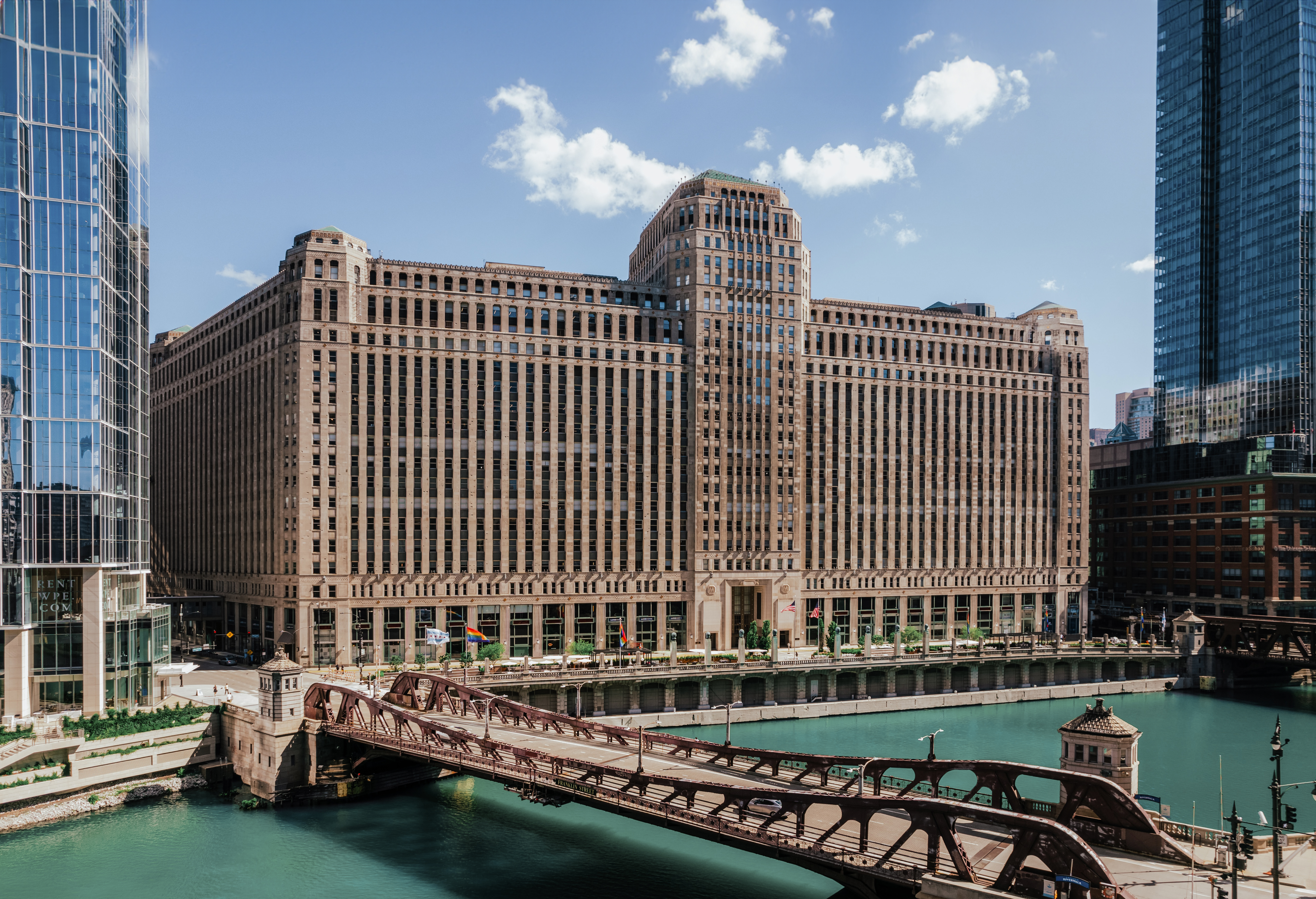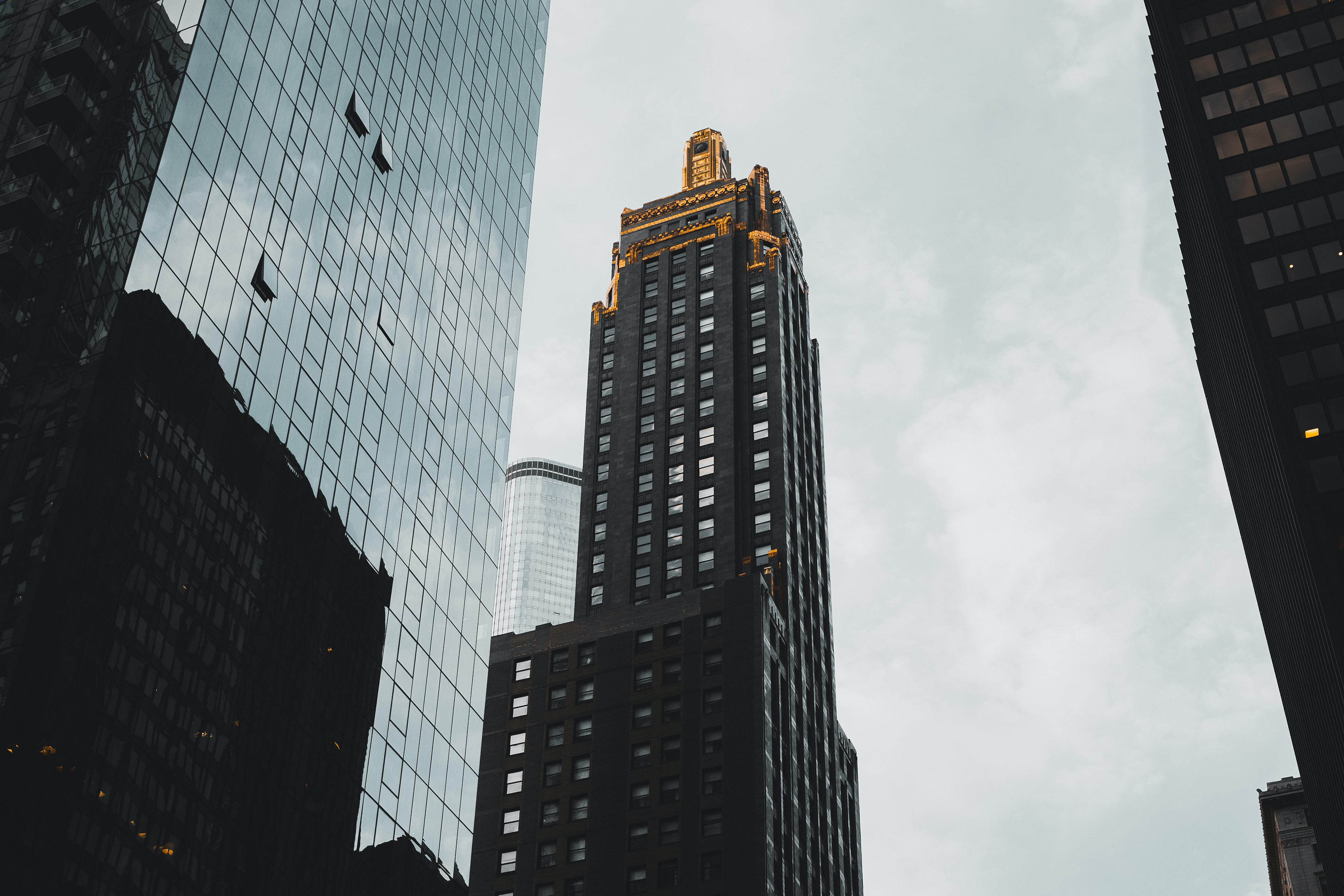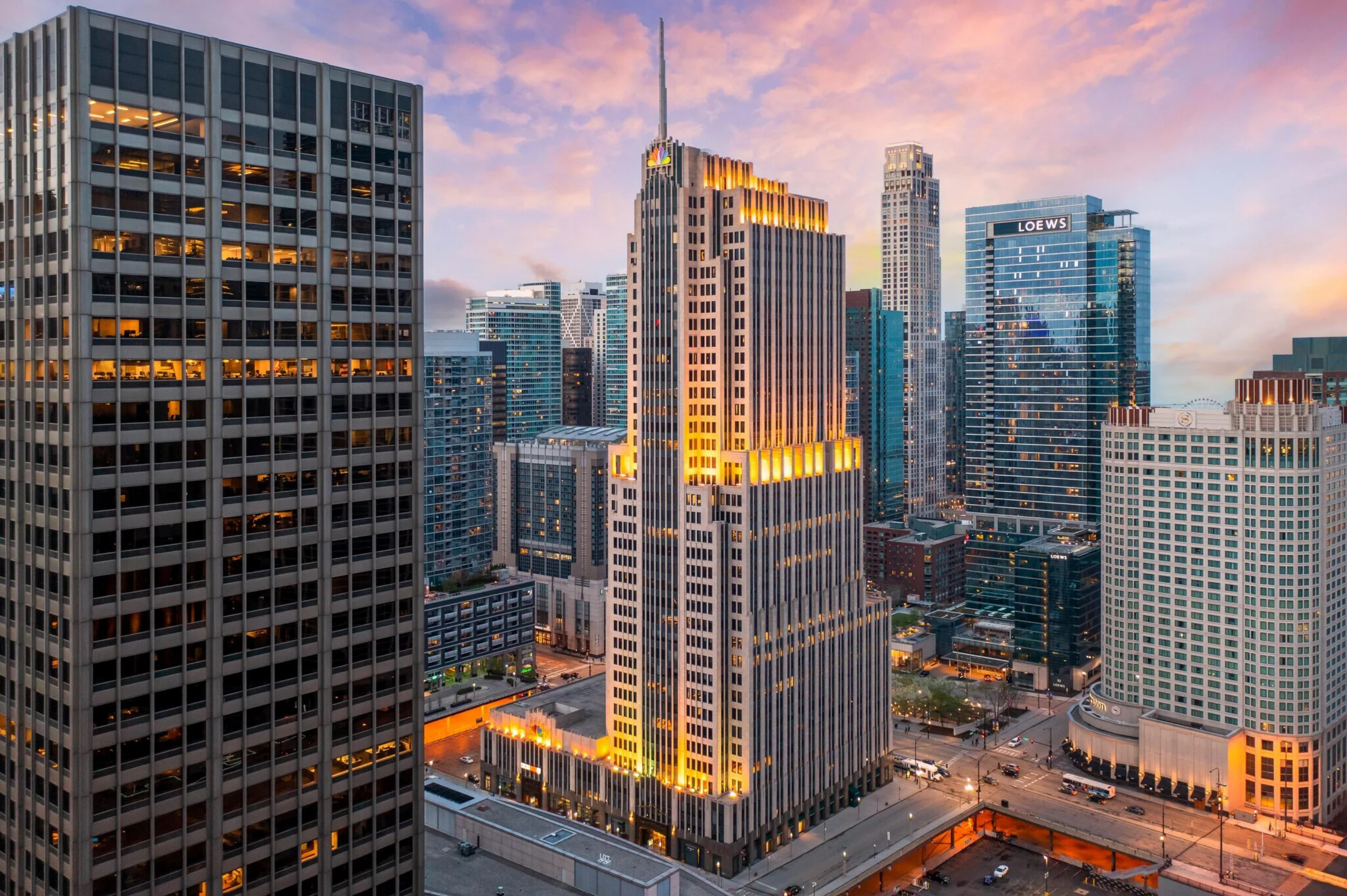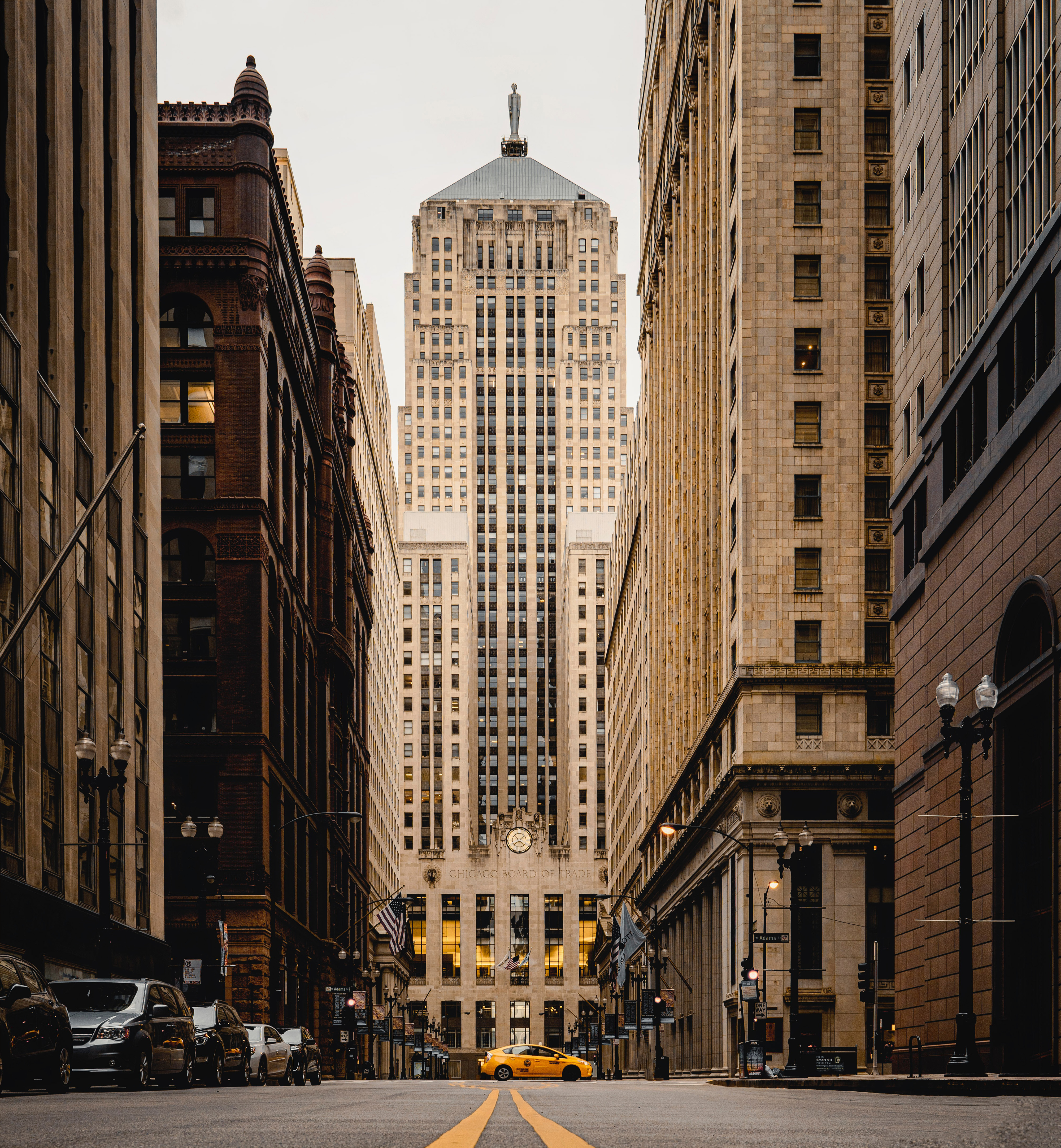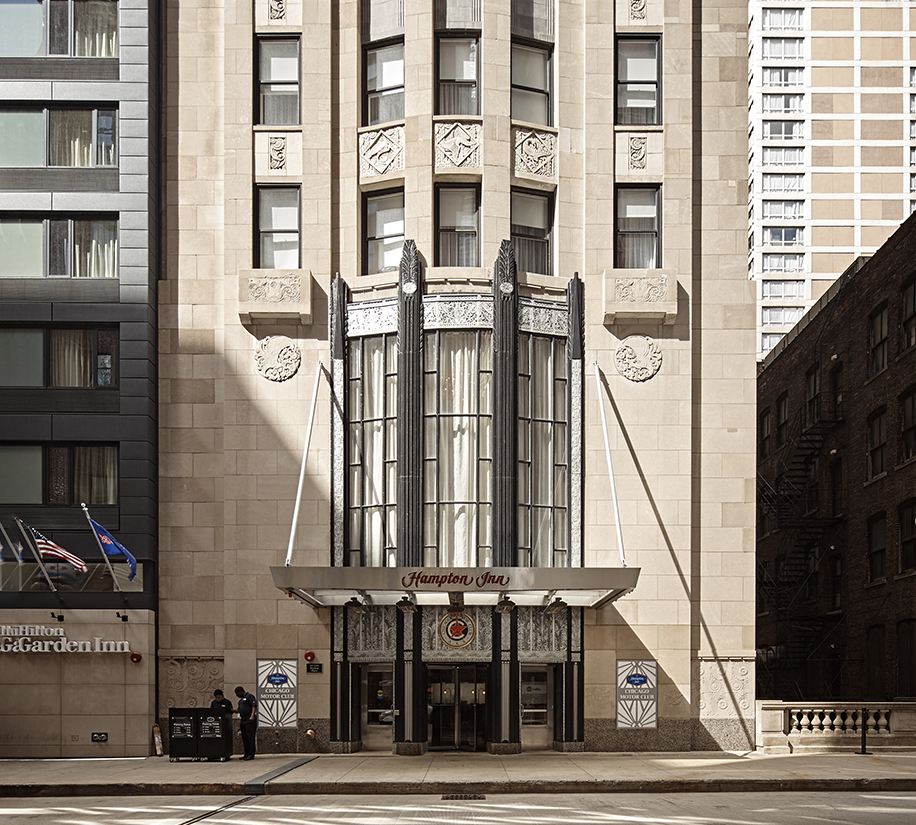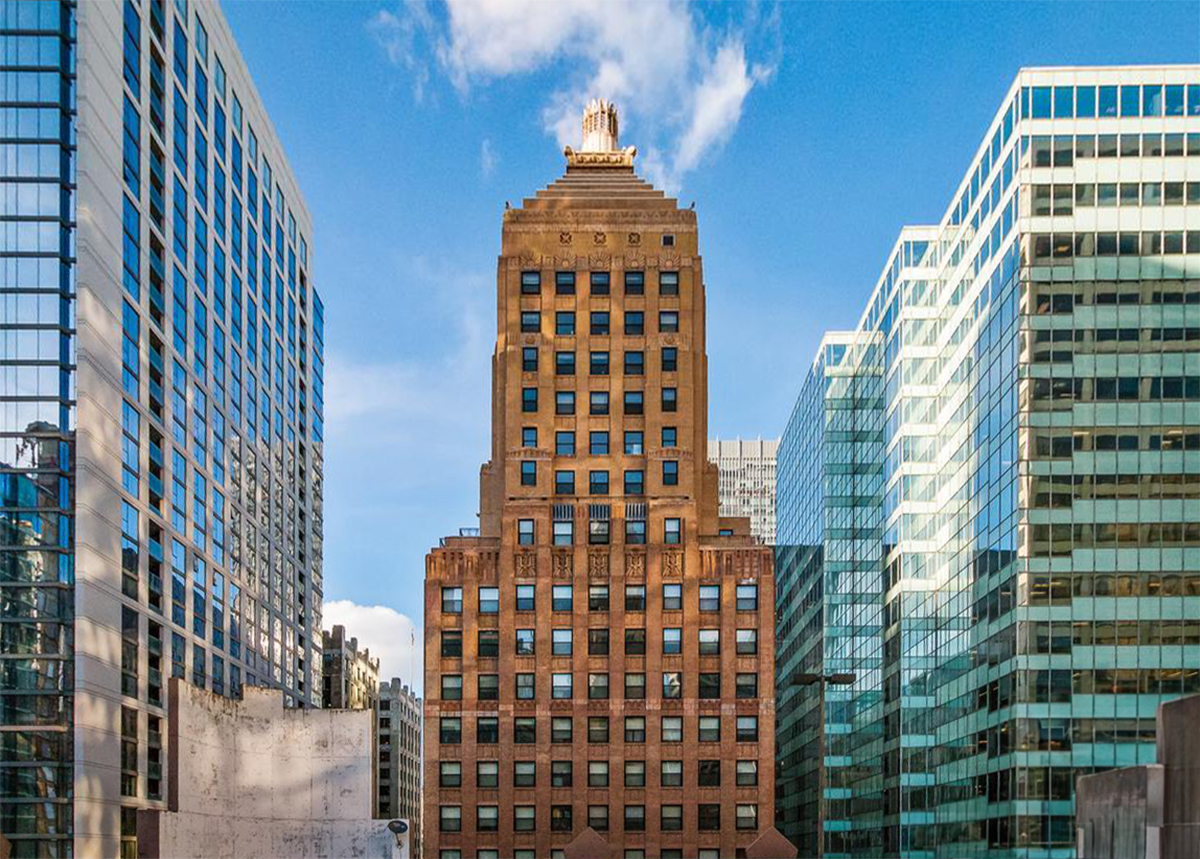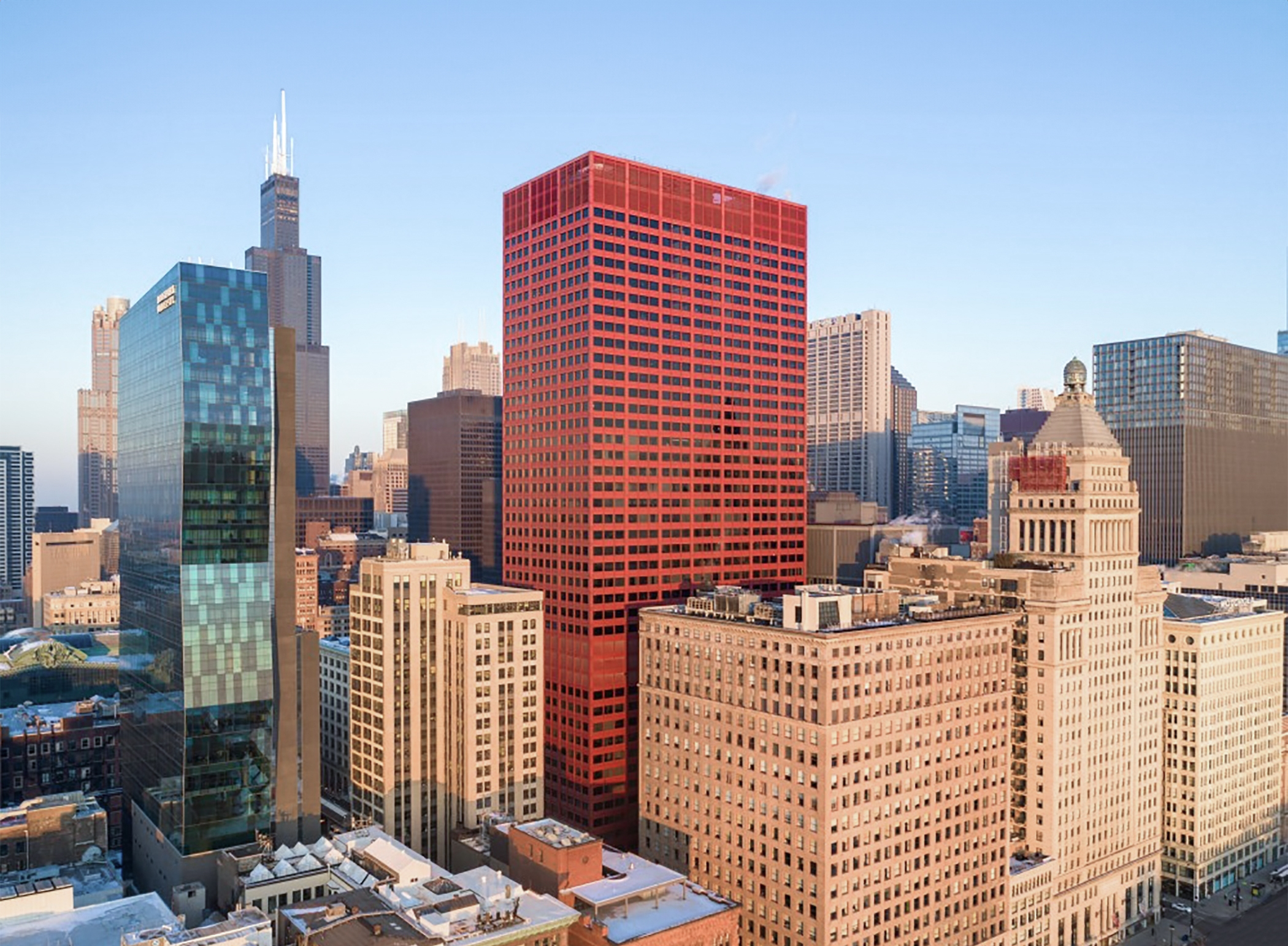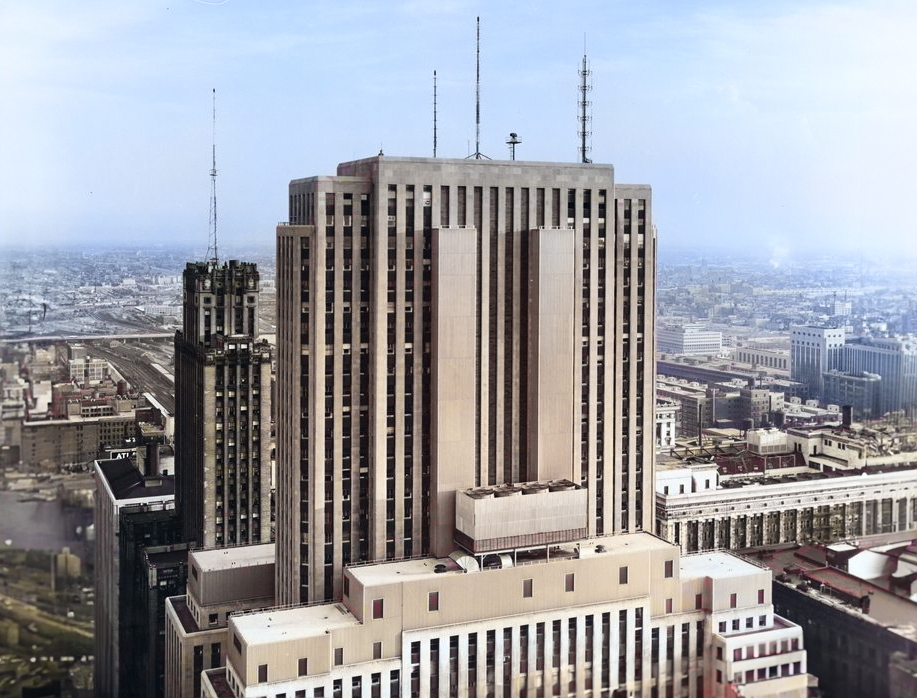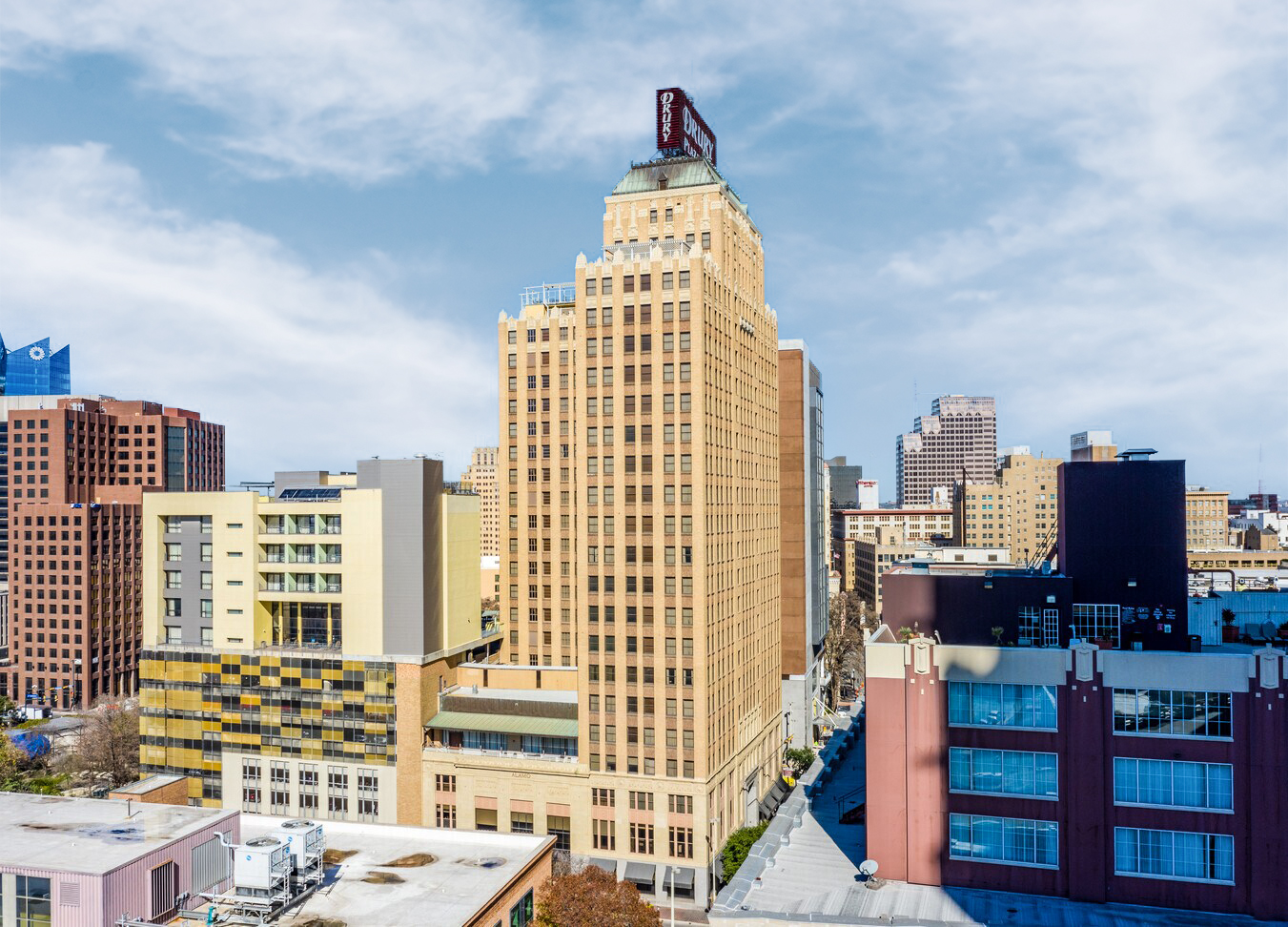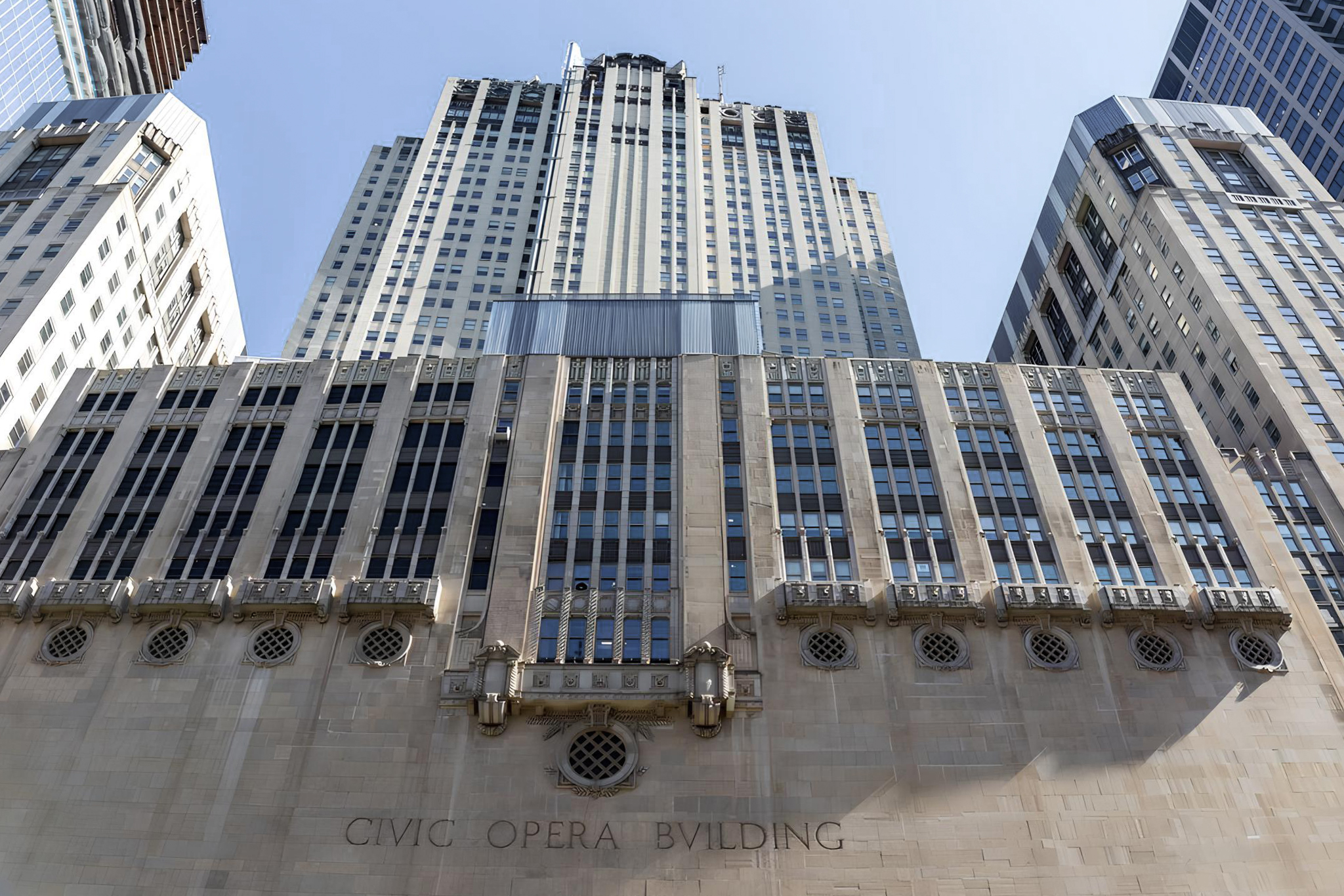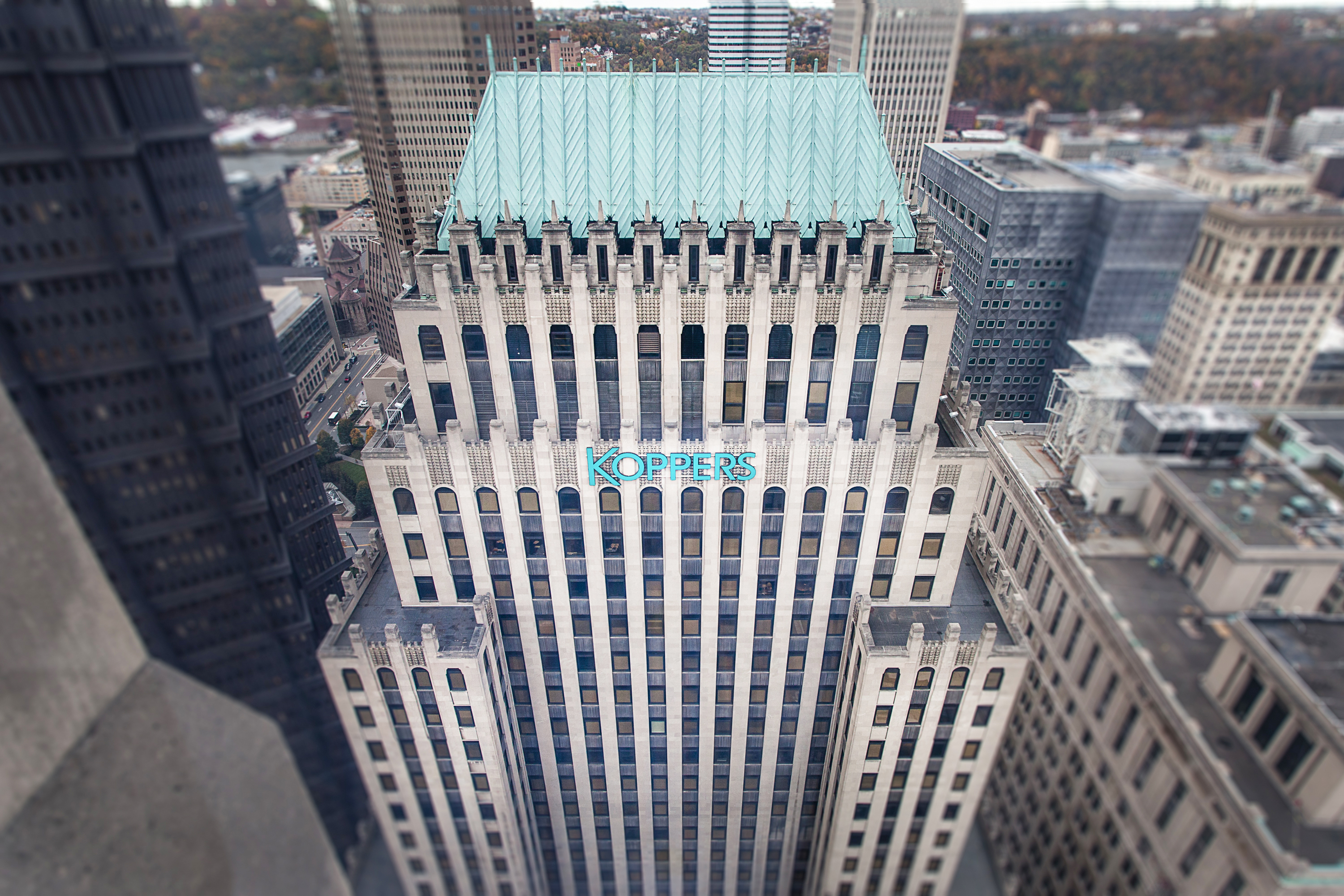The Merchandise Mart is an Art-deco skyscraper designed by Graham, Anderson, Probst & White, and built between 1928 and 1930 in Chicago, IL.
Merchandise Mart is not the only name you might know this building by though. It is common for companies to want to attach their names to iconic buildings when they move in, or for the general public to come up with nicknames, and this one is no exception. The Merchandise Mart is also known, or has been known as, Merch Mart, or Mart.
Its precise street address is 222 Merchandise Mart Plaza, Chicago, IL. You can also find it on the map here.
The building has been restored 4 times over the years to ensure its conservation and adaptation to the pass of time. The main restoration works happened in 1950, 1960, 1977 and 1988.
